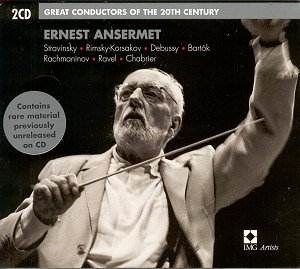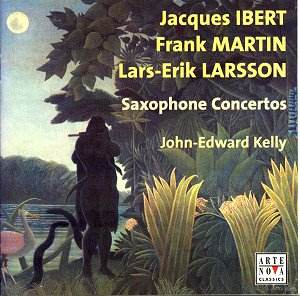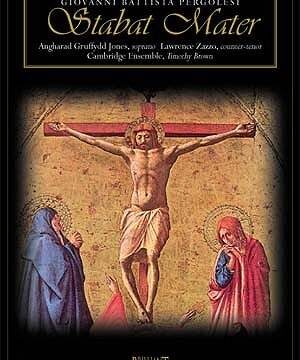 Composer: Ernest Ansermet
Composer: Ernest Ansermet
Works: Stravinsky – Chant du Rossignol, Rimsky-Korsakov – Scheherazade, Debussy – Prélude à l’après-midi d’un faune, Bartók – Concerto for Orchestra, Rachmaninov – The Isle of the Dead, Ravel – La Valse, Chabrier – Fête polonaise
Performers: Orchestre de la Suisse Romande, Orchestre de la Société des Concerts du Conservatoire
Recording: Paris and Geneva, 1953-1964
Label: EMI
Ernest Ansermet, a pivotal figure in the early 20th century classical music scene, is renowned not only for his long-standing association with the Ballets Russes but also for his innovative approach to orchestral sound. This collection from EMI, part of the Great Conductors of the Twentieth Century series, showcases Ansermet’s remarkable ability to illuminate the textures and colors of the orchestral palette. The compilation includes significant works by composers such as Stravinsky, Rimsky-Korsakov, Debussy, Bartók, Rachmaninov, Ravel, and Chabrier, reflecting Ansermet’s broad repertoire and keen interpretative insight.
The recording opens with Stravinsky’s “Chant du Rossignol,” a piece that benefits greatly from Ansermet’s deft touch. His interpretation is marked by vibrant orchestral colors and a keen sense of rhythmic vitality that sets an engaging tone for the disc. Ansermet’s ability to navigate the intricate interplay of the orchestration brings forth a clarity that is often elusive in the hands of less experienced conductors. The transparency of sound allows the woodwinds’ delicate nuances to shine, establishing a sonic landscape that is both rich and inviting.
In Rimsky-Korsakov’s “Scheherazade,” Ansermet faces the challenge of balancing the lush orchestral textures with the narrative flow of the music. The initial ensemble exhibits some uncertainty, yet as the performance progresses, he manages to maintain momentum, avoiding the tendency to let the work’s weighty lower strings dominate the proceedings. The sweetly rendered solos from violin and cello contribute to a sense of warmth and intimacy, while the French horn’s characteristic vibrato lends an authentic European flavor to the performance. The finale, bursting with exotic colors, showcases Ansermet’s skill in maintaining energy and excitement, culminating in a spirited conclusion.
Debussy’s “Prélude à l’après-midi d’un faune” receives a slightly restless interpretation, marked by a tension that may reflect the fluctuating nature of the afternoon itself. Here, Ansermet’s subtle dynamic control allows the orchestra to swell and recede with an organic fluidity, although it occasionally feels less anchored than one might hope. The contrasting sections are handled with finesse, maintaining the elusive quality that is quintessential to Debussy’s vision.
Bartók’s “Concerto for Orchestra,” recorded in 1956, stands out as a testament to the virtuosity of the Orchestre de la Suisse Romande. Ansermet’s leadership here is both authoritative and nuanced, as he deftly navigates the intricate counterpoint and dynamic shifts that characterize this work. The ensemble’s cohesion is remarkable, and the recording captures the vibrant textures with striking clarity, bringing the work’s inherent drama to the fore.
Rachmaninov’s “The Isle of the Dead” provides a stark contrast with its somber and foreboding atmosphere. Ansermet’s interpretation is meticulously controlled, with the taxing string parts executed with precision. The climactic moments, rich in brass and wind textures, are strikingly effective, evoking the intended sense of doom and reflection. Ravel’s “La Valse” is presented with a compelling sense of rhythm and flair, showcasing Ansermet’s ability to convey the work’s swirling elegance and excitement.
Chabrier’s “Fête polonaise,” though less frequently performed, serves as a delightful and rousing conclusion to the collection. Ansermet’s interpretation imbues this festive work with a buoyancy and charm that encapsulate the spirit of celebration, rounding out an exceptionally varied and rewarding disc.
This compilation not only celebrates Ansermet’s contributions to the orchestral repertoire but also highlights his keen interpretative instincts and the exceptional quality of the recordings themselves. Each work is rendered with a clarity and vibrance that reflects Ansermet’s collaborative spirit with both musicians and sound engineers. This release is a significant addition to the discography of one of the 20th century’s great conductors, offering listeners both historical context and a fresh perspective on familiar masterpieces.



